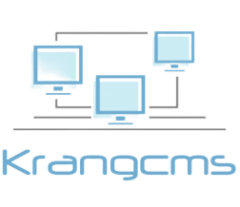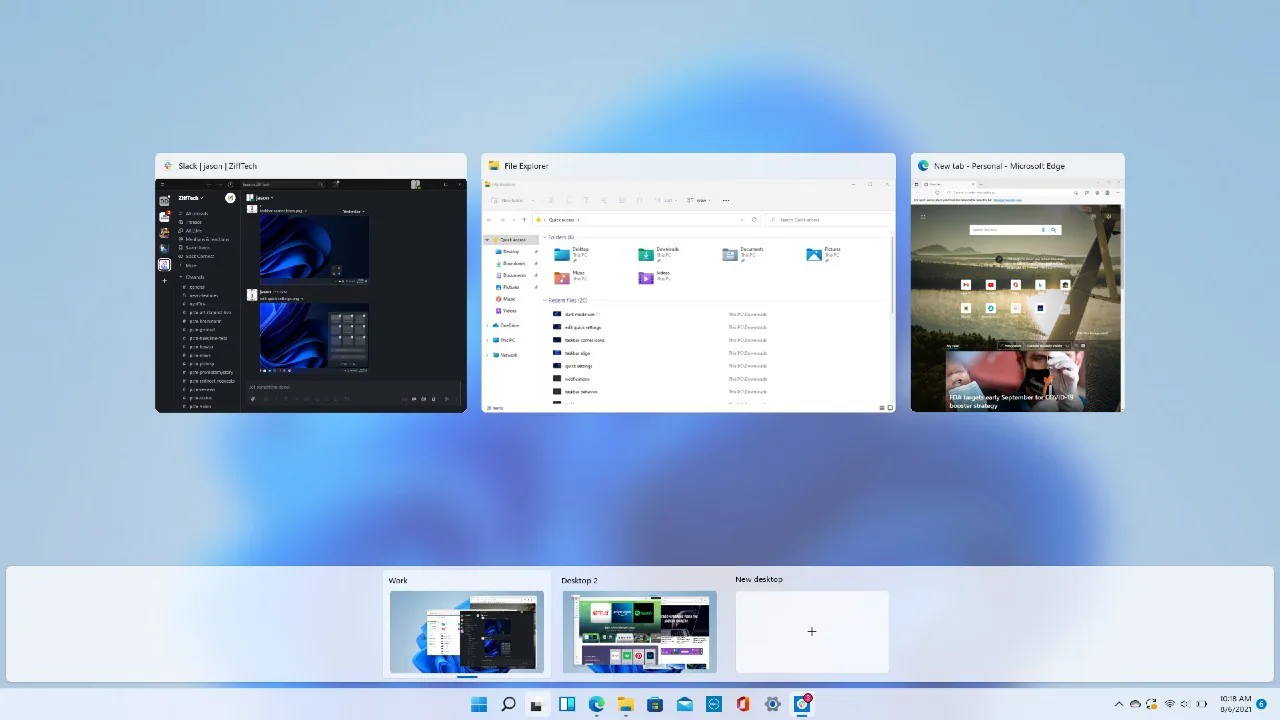Virtual Desktops, a feature introduced in Windows 11, allow users to create multiple separate desktop environments within a single physical screen. Each virtual desktop functions as an independent workspace, enabling users to organize apps, files, and tasks according to different projects or activities. This feature not only enhances multitasking but also helps maintain a clutter-free workspace, promoting focus and efficiency.
Setting Up Virtual Desktops
Setting up Virtual Desktops in Windows 11 is a straightforward process. To get started, follow these steps:
- Click on the “Task View” icon on the taskbar.
- Select “New Desktop” to create a virtual desktop.
- Repeat the process to add more virtual desktops.
Navigating Virtual Desktops
Navigating between virtual desktops is seamless. Use the keyboard shortcut Windows key + Ctrl + Left/Right arrow to switch between desktops quickly. Alternatively, swipe with three fingers on a touch-enabled device.
Managing Apps Across Virtual Desktops
One of the key advantages of using virtual desktops in Windows 11 is the ability to seamlessly manage and organize your apps. This feature lets you maintain a clutter-free workspace and switch between tasks more efficiently. Here’s how you can manage apps across different virtual desktops:
- Drag and Drop: You can easily move apps between virtual desktops by using the drag-and-drop method. Here’s how:
- Open the virtual desktop that currently has the app you want to move.
- Click on the app’s window and hold down the left mouse button.
- Drag the app’s window to the task view icon on the taskbar to activate the virtual desktop overview.
- While still holding the left mouse button, drag the app’s window onto the virtual desktop where you want it to appear.
- Release the mouse button to drop the app onto the new virtual desktop.
- Right-Click Method: Another way to move apps between virtual desktops is by using the right-click menu on the app’s icon in the taskbar. Here’s how:
- Open the app you want to move on the current virtual desktop.
- Right-click on the app’s icon in the taskbar.
- From the context menu, hover over the “Move to” option.
- A submenu will appear showing the available virtual desktops.
- Click on the virtual desktop where you want to move the app.
By using these methods, you can keep your apps organized and easily accessible across different virtual desktops. This level of control allows you to create a customized and efficient workspace tailored to your specific tasks and projects. Whether you’re working on multiple projects simultaneously or separating work from leisure, managing apps across virtual desktops in Windows 11 enhances your multitasking experience.
Productivity Boost with Snap Layouts
Windows 11’s Snap Layouts feature complements Virtual Desktops, making multitasking even more efficient. Snap Layouts allow you to arrange and resize app windows in a grid, optimizing screen space for enhanced productivity.
Personalizing Virtual Desktops
Customize each virtual desktop with different wallpapers, themes, and layouts to visually distinguish them from one another. This aids in quickly identifying the purpose of each workspace.
Keyboard Shortcuts for Virtual Desktops
Mastering keyboard shortcuts can enhance your virtual desktop experience:
- Windows key + Tab: Open Task View.
- Windows key + Ctrl + D: Add a new virtual desktop.
- Windows key + Ctrl + F4: Close the current virtual desktop.
Integrating Virtual Desktops into Workflows
Virtual Desktops are versatile tools. Use them to separate work, entertainment, and personal tasks, creating a more organized digital environment. Switch between virtual desktops to transition between tasks seamlessly.
Optimizing System Resources
Windows 11 has been thoughtfully designed to ensure efficient utilization of system resources, even when you have multiple virtual desktops open simultaneously. This means that you can enjoy the benefits of multitasking without experiencing a significant impact on your device’s performance. Modern computers are well-equipped to handle the demands of virtual desktops, allowing you to seamlessly switch between tasks and projects.
| Aspect | Description |
|---|---|
| Efficient Resource Usage | Windows 11 is optimized to distribute system resources intelligently among different virtual desktops. |
| This prevents one virtual desktop from consuming excessive resources, ensuring a smooth multitasking experience. | |
| As a result, you can run multiple applications and tasks across virtual desktops without noticeable lag. | |
| Modern Hardware Support | Modern computers come equipped with powerful processors, ample RAM, and advanced graphics capabilities. |
| These hardware components are well-suited to handle the demands of virtual desktops without performance degradation. | |
| Minimal Impact on Performance | Windows 11’s efficient resource management and modern hardware compatibility combine to minimize any performance impact. |
| Whether you’re working, streaming media, or engaging in other activities, your device’s performance remains stable. |
Windows 11’s ability to optimize system resources plays a crucial role in enhancing your overall experience. It empowers you to seamlessly transition between different virtual desktops and applications, allowing you to achieve higher levels of productivity without worrying about system slowdowns or resource bottlenecks.
Compatibility and System Requirements
Virtual Desktops are available in Windows 11 Home, Pro, Enterprise, and Education editions. Ensure your system meets the necessary requirements for a smooth experience.
Security and Privacy Considerations
Virtual Desktops do not compromise security or privacy. Each desktop maintains its isolation, preventing apps from interacting across different desktops.
Troubleshooting Virtual Desktop Issues
Encountering issues? Restarting Windows Explorer can often resolve minor glitches. If problems persist, check for system updates and driver compatibility.
Expert Tips for Power Users
- Use Ctrl + Windows key + D to create a new virtual desktop quickly.
- Combine Snap Layouts with Virtual Desktops for a powerful multitasking setup.
- Assign specific keyboard shortcuts for individual virtual desktops for quicker access.
Future Developments and Updates
Microsoft continually refines its operating systems. Expect updates and improvements to the Virtual Desktops feature in Windows 11, enhancing the overall user experience.
Enhancing multitasking with Virtual Desktops in Windows 11 offers a valuable solution for those seeking to manage their digital activities efficiently. By creating distinct workspaces and utilizing the feature-rich environment of Windows 11, users can achieve higher levels of productivity and organization. The marriage of Virtual Desktops and Snap Layouts empowers users to tackle tasks with ease, while the system’s optimized resource management ensures a smooth multitasking experience.
FAQs
- Can I use Virtual Desktops on older versions of Windows? Virtual Desktops are a feature exclusive to Windows 11 and are not available on earlier versions.
- How many virtual desktops can I create? You can create as many virtual desktops as your system can handle, but keeping the number manageable is recommended for better organization.
- Do Virtual Desktops consume more system resources? Virtual Desktops themselves have minimal resource impact, but running multiple applications across them may consume additional resources.
- Can I move apps between virtual desktops while they’re running? Yes, you can move apps between virtual desktops even while they’re running, allowing for dynamic organization.
- Is the Virtual Desktop feature available in all editions of Windows 11? Yes, Virtual Desktops are available across all editions of Windows 11, ensuring everyone can benefit from enhanced multitasking.

